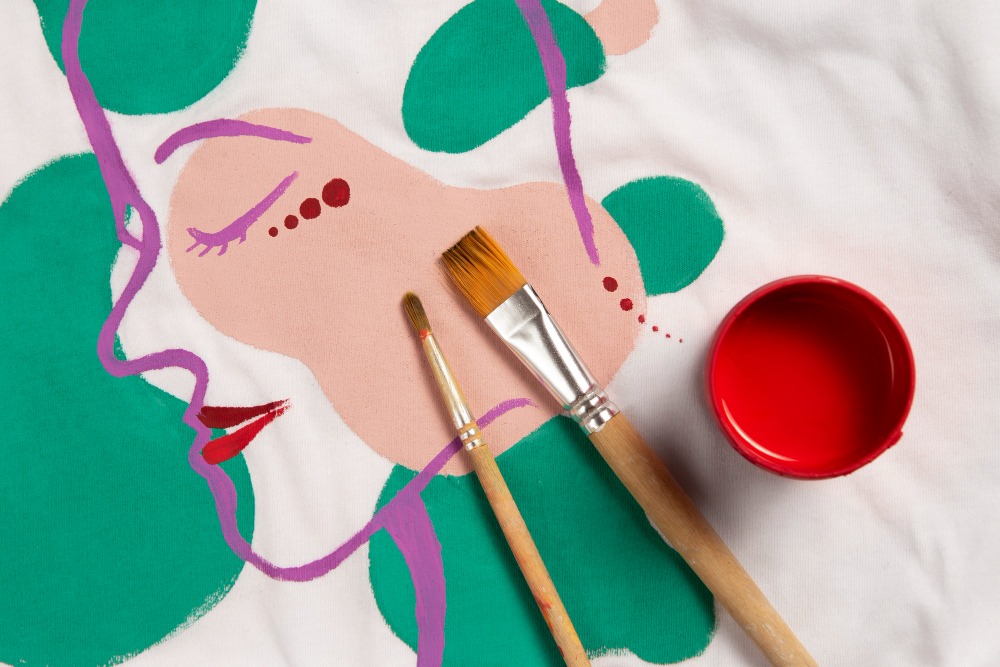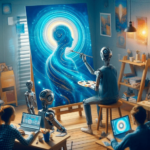Minimalist art, with its “less is more” philosophy, has captivated audiences for decades. In 2024, minimalism continues to evolve, combining timeless techniques with contemporary approaches that reflect today’s cultural, technological, and environmental sensibilities. This article explores the resurgence of minimalist art, focusing on modern techniques, influential artists, and sources of inspiration shaping this movement today.
Core Principles of Minimalist Art
At its heart, minimalist art revolves around a few key concepts:
- Simplicity: Stripping down to the essentials, using a limited color palette, and focusing on geometric shapes.
- Form and Space: Minimalist art often creates a sense of balance and harmony through negative space and clean lines.
- Intentionality: Every element in minimalist art is purposeful, conveying meaning without excess detail.
In 2024, these principles serve as a foundation, with artists expanding the definition of minimalism to include contemporary themes and innovative techniques.
Techniques in Minimalist Art Today
Digital Minimalism
Digital minimalism allows artists to experiment with simplicity in virtual environments. Digital tools like Adobe Illustrator, Procreate, and Blender enable artists to create minimalist artworks with crisp lines, gradients, and monochrome effects.
- Flat Design and Vector Art: Simple, flat vector shapes create the clean, uncluttered aesthetic that defines minimalist digital art.
- Dynamic Grayscale: Artists use various shades of gray and black-and-white schemes, highlighting contrast and shadow while maintaining simplicity.
- Geometric Animation: In 2024, minimalist art is not confined to static images. Artists are creating short, looping animations that bring life to geometric shapes, using subtle movement to express complex ideas.
Eco-Conscious Minimalism
With an emphasis on sustainability, minimalist artists in 2024 are exploring eco-friendly materials and practices. Artists might use recycled canvas, non-toxic paints, or even digital platforms to reduce environmental impact.
- Natural Materials: Wood, stone, and unrefined clay bring texture to minimalist works while grounding them in nature.
- Earth Tones: Many artists focus on organic color palettes, using natural dyes and earth tones that bring warmth and serenity to minimalist pieces.
Abstract Minimalism
Abstract minimalism combines minimal forms with a degree of abstraction, leading to works that invite personal interpretation. By removing concrete subjects, these pieces evoke emotion through simple lines, shapes, and colors.
- Texture Play: Artists experiment with different textures, like coarse paper or rough canvas, to add subtle depth.
- Monochromatic Layers: Many abstract minimalist works use layered shades of a single color to create a nuanced yet simple visual effect.
Inspirations for Minimalist Artists in 2024
- Nature and the Environment
Nature continues to be a profound source of inspiration, as artists are drawn to the simplicity and beauty of organic forms. Minimalist landscapes, with their clean lines and earthy colors, convey the tranquility of nature. Many artists are exploring how minimalist art can convey themes of conservation, highlighting the importance of preserving natural spaces.
- Japanese Zen Aesthetics and Wabi-Sabi
Japanese aesthetics, including Zen principles and the concept of wabi-sabi (beauty in imperfection), are central to modern minimalism. Artists incorporate Zen-inspired symmetry and asymmetry, empty spaces, and muted tones, creating art that exudes calmness and balance.
- Digital and Virtual Minimalism
The digital world offers minimalist artists new landscapes and textures to explore. As people seek relief from information overload, digital minimalism has gained popularity, particularly in web design and virtual reality art installations. These digital minimalist works are influenced by a need for visual simplicity amid our cluttered digital lives.
- Social Commentary
In 2024, minimalist art is a powerful medium for social commentary, particularly on issues like consumerism, climate change, and the impact of technology on human connection. By reducing visual complexity, minimalist art can underscore the value of essentials and provoke viewers to consider what really matters in life.
Emerging Minimalist Artists in 2024
Mona Shin (South Korea)
Mona combines traditional Korean painting techniques with modern minimalism. Her works use muted colors and simple brushstrokes, evoking tranquility and connection with nature. Shin’s art is widely acclaimed for its Zen-inspired simplicity and meditative quality.
Alejandro Ramos (Mexico)
Alejandro’s work brings a contemporary twist to minimalist landscapes, using layered geometric forms in earthy tones to depict open fields and desert scenes. His art captures the essence of place, focusing on the spirit of natural landscapes.
Isabella Lu (USA)
Isabella is known for her minimalist animations, often featuring geometric shapes in soothing color palettes. Her short video loops focus on themes of mindfulness and balance, resonating with viewers who seek calm amid a fast-paced world.
Aiko Tanaka (Japan)
Aiko explores wabi-sabi in her monochromatic paintings, focusing on the beauty of natural imperfections. Her works often depict cracked surfaces or unfinished strokes, using negative space to create a sense of mystery and depth.
Minimalist Art in Digital and Virtual Spaces
VR Minimalist Art Exhibitions
Virtual reality (VR) has opened up new ways to experience minimalist art. VR exhibitions allow audiences to immerse themselves in a serene environment, free of distractions. Artists are creating virtual galleries with floating geometric shapes and serene color schemes, offering viewers an interactive minimalist experience that would be difficult to achieve in a physical space.
AR Art Installations
Augmented reality (AR) has also played a role in modern minimalism, with artists creating overlays that add a digital layer to physical minimalist art pieces. For instance, a blank white canvas might reveal hidden shapes or subtle animations when viewed through an AR app, adding a dynamic twist to traditional minimalism.
Interactive Minimalist Art
Interactive digital art installations are becoming popular, allowing viewers to engage directly with minimalist compositions. Simple touch, gesture, or motion controls can alter colors, shapes, or positioning, letting viewers personalize the minimalist experience.
Sustainability and Minimalism in Art
In 2024, minimalism is not only about aesthetics but also about environmental consciousness. As artists and audiences become more eco-aware, minimalist art reflects a shift toward sustainable practices.
- Repurposed Materials: Artists are embracing the idea of “less is more” by using repurposed or recycled materials, reducing waste, and creating art with minimal environmental impact.
- Digital Art as a Low-Impact Alternative: With many minimalist artists moving to digital platforms, the art world is witnessing a reduction in material waste. Digital creations can be shared widely without the physical resources traditionally required for paints, canvases, and sculptures.
Minimalism as a Lifestyle and Mindset
Minimalism goes beyond art; it’s a lifestyle and a mindset. As society increasingly values mindfulness, simplicity, and sustainability, minimalist art has become more than a visual style—it’s a reminder to focus on essentials. Artists in 2024 see their work as a reflection of a life philosophy that values clarity, peace, and intentionality.
Conclusion
Minimalist art in 2024 is more relevant and versatile than ever. By integrating sustainability, digital innovation, and global cultural influences, minimalist artists are creating work that resonates deeply with contemporary audiences. Through simple forms, neutral palettes, and intentional spaces, minimalist art continues to provide a calming counterbalance to the complexity of modern life, inspiring viewers to find beauty in simplicity.
As we move further into the digital age, minimalist art will continue to evolve, with artists pushing boundaries and exploring new techniques to express this timeless aesthetic in ways that are both innovative and grounded. Minimalism remains a celebration of less, proving that simplicity and restraint can often say the most.


